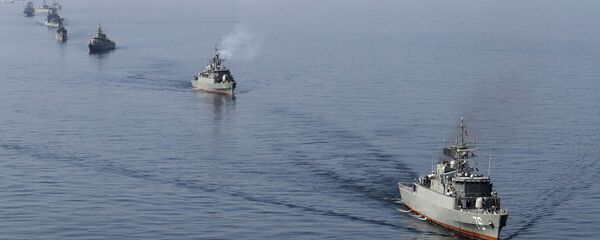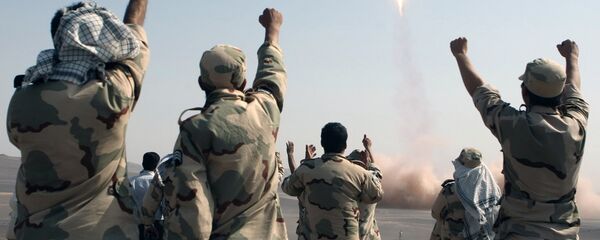The Iranian military has tested a brand new Nasir cruise missile during large-scale naval drills in the Indian Ocean that took place from February 26 until March 1. Commenting on the launch, Iranian Defense Minister Brig. Gen. Hossein Dehqan said that the cruise missile has hit the specified target with maximum precision.
Various naval units, including submarines, missile-launching destroyers, surface and subsurface units, missile and electronic warfare systems, drones, fighter jets and marines took part in the military exercises. Missile tests, intelligence operations, deployment of submarines and rescue operations were conducted as part of the drills, involving a range of naval equipment including submarines and helicopters manufactured in Iran.
The Velayat 95 drills are the last in a series of military exercises, which were announced in June 2016 by the Iranian Navy. The Nasir missile can be placed on ships, submarines, aircraft and self-propelled coastal complexes.
Military expert and retired Colonel Viktor Litovkin said in an interview with Radio Sputnik that the Iranian missile has been in mass-production since the beginning of 2010.
"It's difficult to call the missile brand new; it [Nasir] is quite well-known. This cruise anti-ship missile can be launched not only from surface vessels, but from submarines and jets. This time it has been tested from ground-based complexes. Its flight-range is up to 35 kilometers. The missile can track the landscape and acquire targets based on information from an inertial navigation system. They [the Iranians] added laser guidance. And this is a premier," Litovkin said.
He added that the Iranian Navy is participating in the large-scale drills near the Strait of Hormuz, a strategically important "oil corridor" through which lies the main shipping route of Middle Eastern oil export. That's why the drills concern the United States, the expert believes.
"Iran wants to be the dominant country in the Middle Eastern region. Iran has 'an axe to grind' against the US allies [in the region], Saudi Arabia, Qatar, Kuwait and Israel. This annoys the US. Iran conducts exercises near the Strait of Hormuz where oil tankers belonging to the US replenish the supply of fuel. Iran, therefore, demonstrates that it can block this area at any time. Moreover, American warships are always in the Persian Gulf area, where a major US military base is located. Iranian boats have repeatedly approached American frigates and destroyers signaling an attack. Americans don't enjoy it," he explained.
The US has already expanded sanctions against Tehran over Iran's missile program, Litovkin continued. However, in his opinion, after the current cruise missile test, no sanctions will follow from the international community.
Iran's naval drills come amid an escalation of tensions with the new US administration. After the inauguration of US President Donald Trump, Washington-Tehran tensions escalated amid Iran's ballistic missile test and the new US sanctions against Iran. Moreover, Trump has repeatedly criticized the Iran nuclear agreement, saying that it is a "bad deal" and "disastrous for Israel."
In addition, the exercises come after reports emerged suggesting that the US had allegedly proposed Saudi Arabia, the United Arab Emirates (UAE), Jordan and Egypt to form a US-backed defense pact which would share intelligence with Israel and counter Iran's influence in the region.






